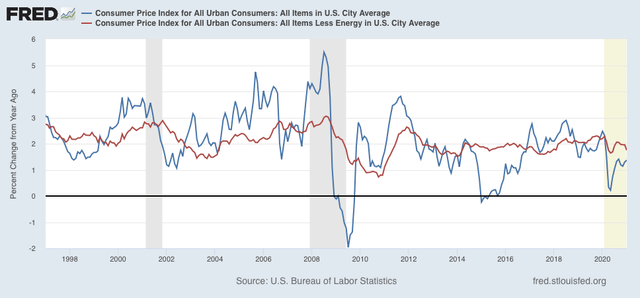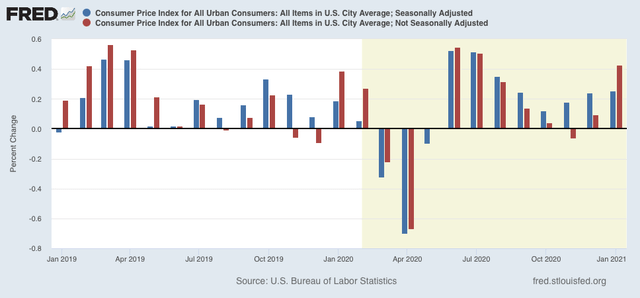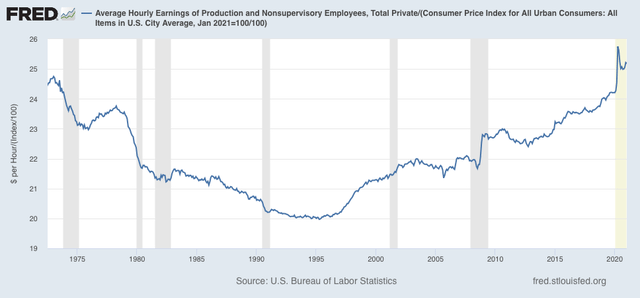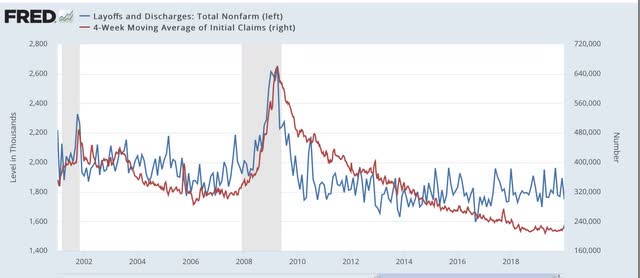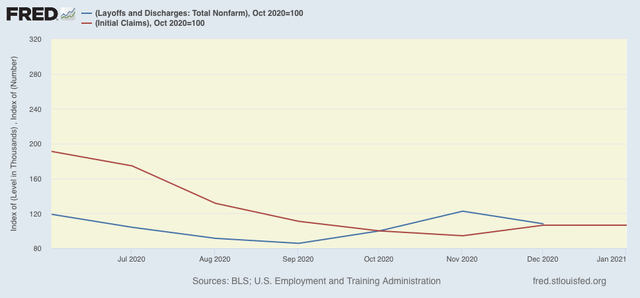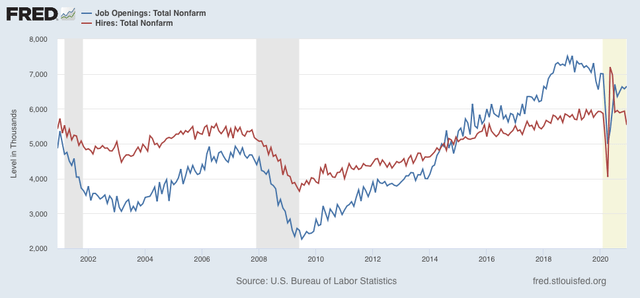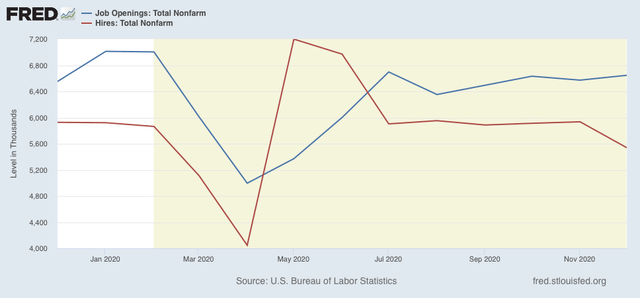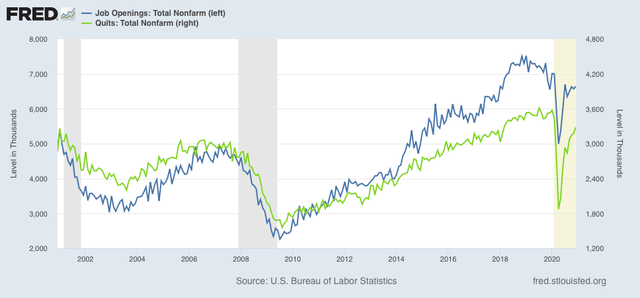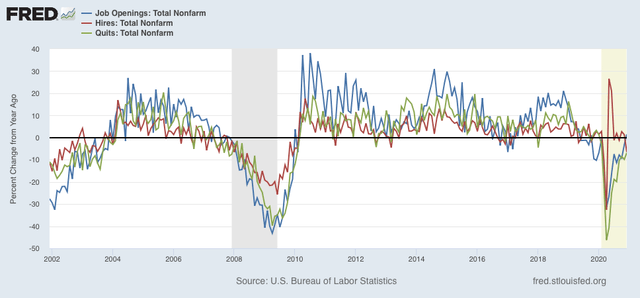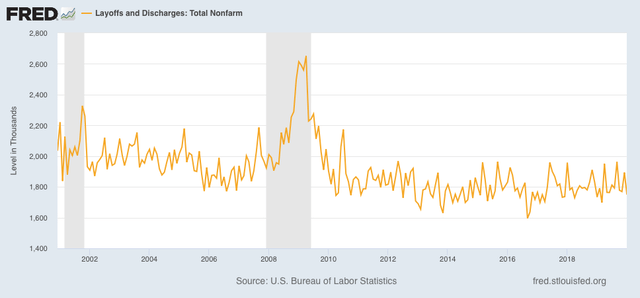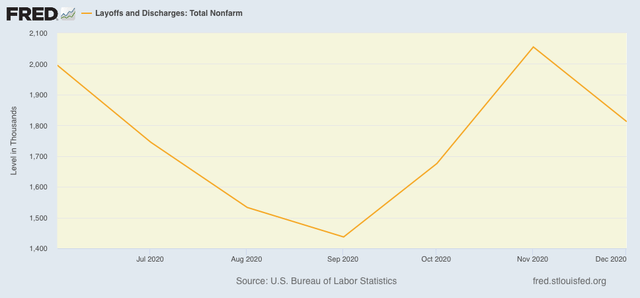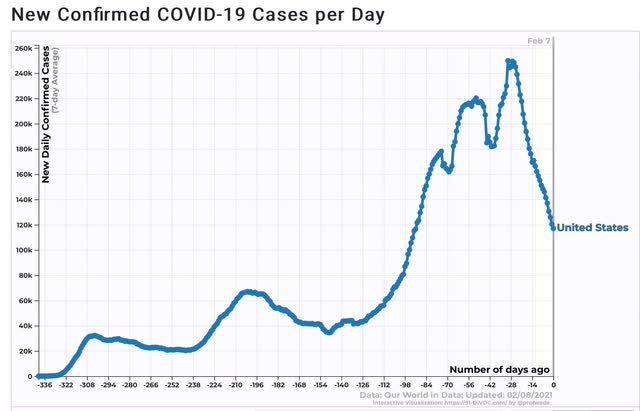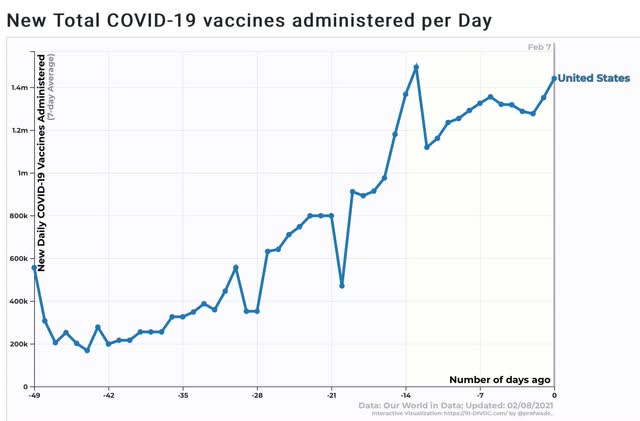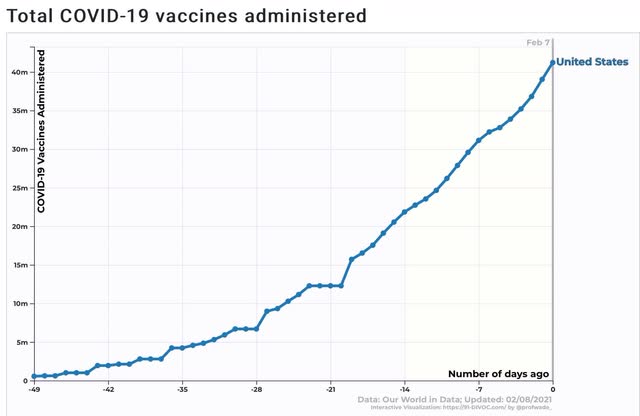- by New Deal democrat
Some - very relative - good news in unemployment claims this week. It looks like the recent increase in new claims has peaked, while continued claims continue to decline. With new daily infections, still horrible at 100,000/day, only 40% of their 250,000/day peak, and vaccinations slowly increasing near 1.5 million/day, we may have seen the worst.
To today’s data: on a unadjusted basis, new jobless claims declined by 36,354 to 813,145. Seasonally adjusted claims declined by 19,000 to 793,000 (meaning last week’s original number was revised higher by nearly 40,000!). The 4 week moving average also declined by 33,500 to 823,000.
Here is the close up since the end of July (these numbers were in the range of 5 to 7 million at their worst in early April):
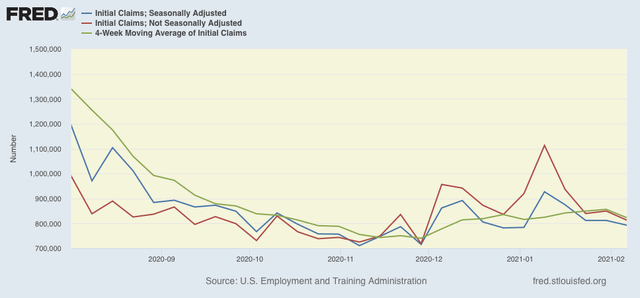
Both adjusted and unadjusted claims remain above their worst levels at the depths of the Great Recession.
Because of the huge swings caused by the scale of the pandemic - typically claims only vary by 20,000 or less from week to week, but since the start of the pandemic, swings of 50,000 or 100,000 per week have happened as often as not, I have been posting the YoY% change in the numbers as well, since they will be much less affected by scale. As a result, there is less noise in the numbers, and the trend can be seen more clearly:
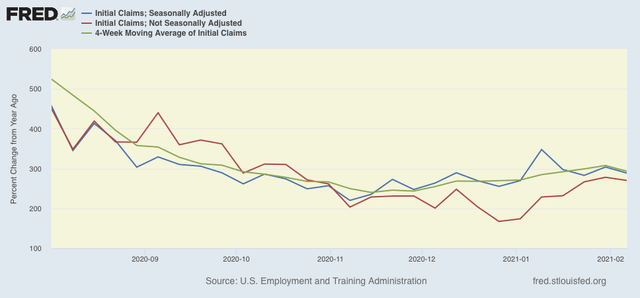
The recent elevation in new claims compared with their November lows is clear, as is the plateauing of new claims in the past few weeks. But the evidence is also consistent with this week being noise in a rising trend, so several more weeks of data will be necessary to confirm any change.
Meanwhile continuing claims, which historically lag initial claims typically by a few weeks to several months, made new pandemic lows yet again this week. Seasonally adjusted continuing claims declined by 145,000 to 4,545,000, while the unadjusted number declined by 167,609 to 5,025,135:
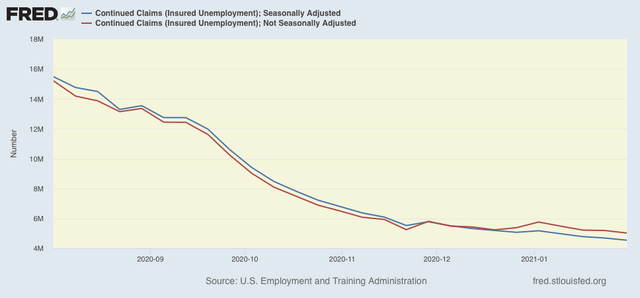
Although I had suspected that we would see an upward reversal, obviously that hasn’t happened. Continued claims remain at a level last seen in autumn 2009, only about 6 months after their worst levels of the Great Recession.
I am hopeful that the disciplined approach to the pandemic by the Biden Administration, together with the onset of better weather in spring (fewer indoor activities), and more vaccinations, will mean that we either have, or are about to have, put the worst of the job losses behind us.



